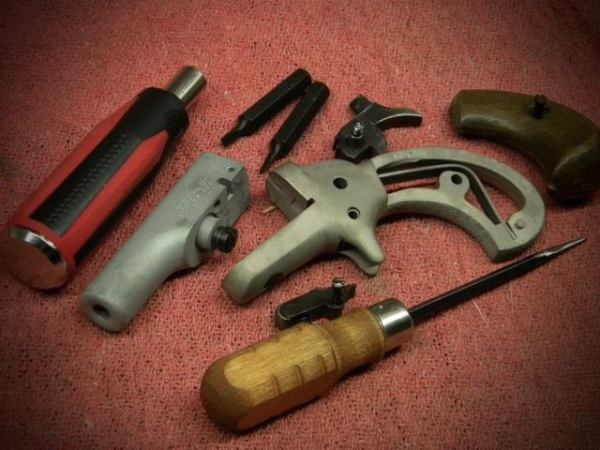
I once owned a single-shot .22 Deringer …
Ask someone about Deringers and you’ll get a mixed bag of responses. Whether in pocket, boot, vest, or purse, guns like these have been around since the 1700’s -- as flintlock ignited muzzleloaders of course. And yet, people still don’t really know what to think of them; most don’t even know how to spell the name. So, do Deringers have a place in the modern defensive arsenal? I’m thinking, “Yes.”
The original “Deringers” – one “r” - were produced by Henry Deringer of Philadelphia in 1825. (A typo when reporting Lincoln’s death – Booth used a Deringer - misspelled both designer and pistol’s name.) A pair of percussion cap muzzle-loaders cost around $30. Remington produced 150,000 Model 95’s, an over-under .41 caliber rim-fire derringer, from the mid-1800’s until 1935. High Standard introduced a break-action derringer in the early 60’s, which fired with a double-action trigger. Today, Bond Arms produces quality Deringers, and North American Arms offers a variety of “mini revolvers” – close enough to the single shot and double barrel microguns. Owning a quality Deringer, as opposed to a cheap, pot-metal junker, isn’t a problem.
Deringers are easily concealed. Some occasions call for clothing that offers few options for concealing a pistol. While they don’t carry as many rounds as small, slim semi-auto pistols, Deringers do come in a wide variety of effective calibers and they can be loaded with rat shot for varmints. Deringers are more reliable than a semiauto pistol as there are fewer moving parts, with no concerns of “limp-wristing” or feeble grip causing a stoppage – and there’s no slide to be pushed out of battery during a danger-close struggle. Deringers are simple to operate. If you’re using a pocket pistol it’s desperate times. Under stressful conditions simple is always best.
A common concern with these tiny guns is “accuracy.” Deringers are not “fighting” pistols that, if necessary, can be used to take control of your surroundings. They’re designed for one purpose – “Stop this person, NOW!” They buy you time. Time is distance. Escape, so you can get to another location that’s safe or that can be defended. Accuracy is not going to be your problem.
As with any defensive weapon the key is practice. You’ve got to spend enough time with gun in hand to learn how it works. Dry practice is always best. This is especially true for the presentation. It doesn’t matter what you’re carrying if it can’t be in your hand and ready in a timely fashion.
Live fire is mandatory to ensure proper function, proper manipulations on your part and -- trust me on this -- what it’s like to actually press off a few rounds. At the same time, you’re getting data on accuracy, comparing ammunition to determine what works best.
Today’s column was inspired by a personal project. At around thirteen years of age, I acquired a small single-shot Deringer in .22 … without my parents’ knowledge, of course. Many years ago, it became unsafe to carry, and needed a little T.L.C to get it back into shape. Since it had to be disassembled, I decided now was the time to do a complete rebuild. More on that later.
Meanwhile, ponder on the advantages of the Deringer. It might be just the motivation you need to try something a little different.
Tiger McKee is director of Shootrite Firearms Academy. He is the author of The Book of Two Guns, AR-15 Skills and Drills, has a regular column in American Handgunner and makes some cool knives and custom revolvers. Visit Shootrite’s Facebook page for other details.